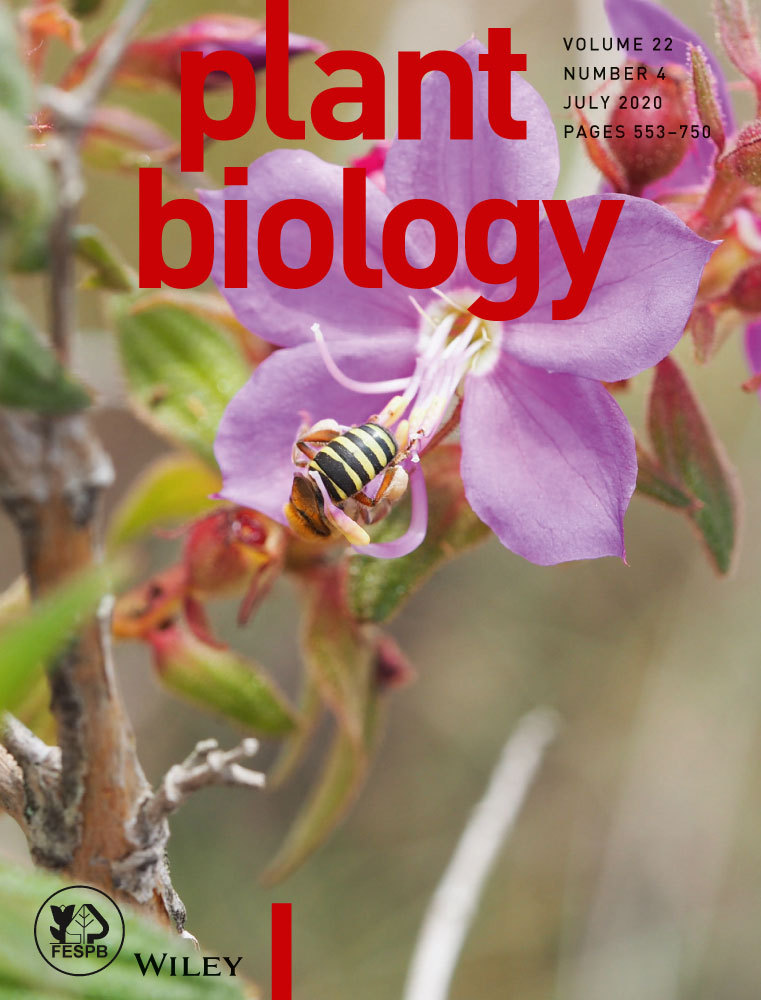Ver ítem
- xmlui.general.dspace_homeCentros Regionales y EEAsCentro Regional Tucumán - Santiago del EsteroEEA FamailláArtículos científicosxmlui.ArtifactBrowser.ItemViewer.trail
- Inicio
- Centros Regionales y EEAs
- Centro Regional Tucumán - Santiago del Estero
- EEA Famaillá
- Artículos científicos
- Ver ítem
The fungal elicitor AsES requires a functional ethylene pathway to activate the innate immunity in strawberry
Resumen
AsES (Acremonium strictum Elicitor Subtilisin) is a fungal elicitor that activates innate immunity conferring disease resistance in strawberry (Fragaria x ananassa Duch.), Arabidopsis, and other plant species. The aim of the present work was to evaluate the involvement of ethylene (ET) signalling pathway in AsES‐mediated immune response in strawberry. ET production and expression of the genes responsible for ET synthesis, perception, and response, were
[ver mas...]
AsES (Acremonium strictum Elicitor Subtilisin) is a fungal elicitor that activates innate immunity conferring disease resistance in strawberry (Fragaria x ananassa Duch.), Arabidopsis, and other plant species. The aim of the present work was to evaluate the involvement of ethylene (ET) signalling pathway in AsES‐mediated immune response in strawberry. ET production and expression of the genes responsible for ET synthesis, perception, and response, were measured after AsES treatment. The ROS (H2O2) accumulation and immunity induced by AsES were studied after ET perception was blocked by 1‐methylcyclopropene (1‐MCP). Biochemical and molecular results showed that AsES induced a marked increase in local and systemic biosynthesis of ET, both in a biphasic manner. Blocking of ET perception by 1‐MCP prior to AsES induction reduced production of ROS (H2O2), and unables AsES to elicit defense against fungal pathogens of different lifestyles such as Botrytis cinerea (necrotrophic) and Colletotrichum acutatum (hemibiotrophic). These findings contribute to elucidate the mode of action of the novel elicitor subtilase AsES, specifically regarding the role of ET signalling in the activation of plant innate immunity in addition to the multitude of processes regulated by ET in plants.
[Cerrar]

Autor
Perato, Silvia Marisa;
Furio, Ramiro Nicolás;
Tomas-Grau, Rodrigo H.;
Caro, María del Pilar;
Hael Conrad, Veronica;
Díaz Ricci, Juan Carlos;
Martínez Zamora, Martín Gustavo;
Fuente
Plant Biology (First published: 05 August 2020)
Fecha
2020-08
Editorial
Wiley
ISSN
1435-8603
1438-8677
1438-8677
Formato
pdf
Tipo de documento
artículo
Palabras Claves
Derechos de acceso
Embargado
 Excepto donde se diga explicitamente, este item se publica bajo la siguiente descripción: Creative Commons Attribution-NonCommercial-ShareAlike 2.5 Unported (CC BY-NC-SA 2.5)
Excepto donde se diga explicitamente, este item se publica bajo la siguiente descripción: Creative Commons Attribution-NonCommercial-ShareAlike 2.5 Unported (CC BY-NC-SA 2.5)

